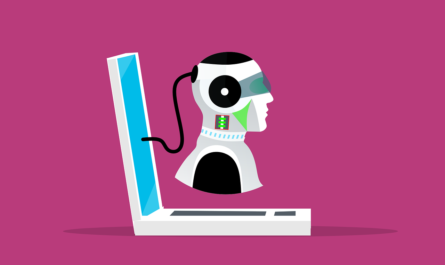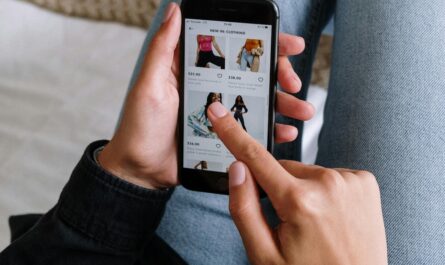By Cale Crueger
Growing up in the social media era has taught today’s generation much about online trends, behavior, humor and interface. As students, we have the privilege of learning about how to use social media analytically, strategically and for the benefit of clients and our own careers. The skills we are developing in classes like Social Media 480 will allow us to serve as PR professionals and navigate media platforms with knowledge and experience.
Many are not so fortunate. In the digital age, a glaring disadvantage has arisen for those looking to promote themselves on media platforms. “Digital disadvantage” is a term, coined by sociologist Forrest Stuart, for the describable differences between how people from varying backgrounds and privilege use technology in their daily lives. It also encompasses the consequences of their online interactions and behavior in a larger social sphere.
As content creators compete for audience engagement, praise and social media following across platforms, the attention of online audiences is now a commodified resource — one that we may likely be entrusted (and paid) to harness. It is no secret that audiences are driven towards content that is shocking. Marketers have long used shock advertising techniques. Similarly today, brands that appeal to malicious humor, align themselves with controversial celebrities or weigh in opinionatedly on social issues risk not only backlash, but praise. When brands rely on this shock value-content for audience attention, they profit off of a culture that makes disparaging impacts on those who use social media for their own survival.
An example can be seen how low-income, minority youth face unique repercussions of the digital divide. Upon realizing social media as a viable route from poverty, content creators like drill musicians capitalize on audience desire for shocking content out of necessity. Drill musicians are often then expected to prove their authenticity to the violent or crime-ridden lifestyles they depict in their content in order to earn their audience’s approval. When any brand or company similarly feeds into this nature of media users, they set a standard for consumer culture and behavior that makes impacts far beyond their scope.

Another cause of the digital disadvantage are the many paid services for promoting brands. Search engine optimization techniques, promotions, partnerships and even PR teams do not come cheaply. Companies that cannot afford to heavily boost their content or utilize these services may become overshadowed by those who can. Social media has paved the way for a greater divide in wealth and has made the pathway to success for those already in disadvantaged positions even more difficult.
As PR professionals, our commitment to upholding ethical standards transcends our work. Something we must be aware of as we embark on careers in media is how the same tools we yield for clients often wield as weapons for others. By understanding consumer tendency to be allured by shock value-content and the consequences of this, we can better understand how to feed consumer needs without similarly feeding into a negative culture that entraps those with little other choice than to perform in. Understanding how social media acts as a chasmic creator of wealth inequality and limits those already at a disadvantage similarly is an undertaking anyone looking into this career should carry with them.
We should know that the privilege of being a media worker comes with responsibility. With knowledge of digital disadvantages, we can hopefully use our awareness to counteract the harmful culture and widening class gap that social media cultivates.




This piece was so well written and very insightful. I feel like I relate to this on the younger generation perspective and also going into PR with this new insight to what the digital age can help and harm with.
Great blog post! Shock advertising has always fascinated me because the ads go one of two ways: they resonate with your audience and spark action or create a PR disaster. Brands need to be very cautious when using shock advertising, and their executions make or break the campaign. I have done numerous case studies on brands that unironically used shock advertising, and it made a massive mess for their PR team to clean up. I also have done case studies on brands that use shock advertising to promote more sustainable ways of living, and those always seem to spark a positive conversation on social media.
I feel like I learned so much from this post and will take this into my future as a PR professional. Understanding the positives and negatives of anything you put out into the world is extremely important and that rings especially true when it’s your career.
Understanding the strengths of social media and how to use it to your advantage is crucial in today’s world. I definitely need to add more tools to my skillset in media and my ability to analyze and use data to contribute to my own social media channels. I think this post was spot on and gave me a lot to think about. Awesome work!
Great post Cale! The digital disadvantage is a real problem that I feel will grow worse as we get more reliant on technology. Now that every generation is using phones and iPads from a younger and younger age, I wonder if this disadvantage will get more extreme. Social media and the digital world has become a quintessential part of school over the past couple year so I fear the consequences of the digital divide will only get worse. Regardless lovely post!
Hello Cale,
I was not very informed about the issue of the digital disadvantage before reading this article. Figuring out how to use social media to our personal advantages would be the next step most likely. The idea of tools for our client yet seen as weapons for others intrigued me. With the internet being a large aspect of all of our daily lives I wonder how this will effect our futures especially in the PR world.
As a tech enthusiast, I really like how well written this blog was. I am all for believing technology can help us, which is can but I loved reading about the disadvantages that come wit this new digital age.